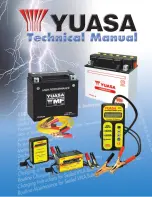
ROOTES MANUAL WSM. 124
Section N (Elec. Equipment)
should not normally be necessary. However, in
an instance where a single or both horns fall to
operate satisfactorily the exact cause can be quickly
diagnosed and rectified as follows:-
NOTE: Early model horns can be dismantled for
the purpose of examining the Internal connections
and contacts only, further dismantling beyond this
fig.
33.
The Clear Hooter horn
is not to be attempted. Later model horns are a
riveted assembly and, therefore, cannot be dis
mantled. If ,the horns are removed from the
vehicle for the purpose of tonal adjustment, they
are to be held firmly in a vice by the mounting
bracket so that the best results In sound are
obtained.
Sound-loss of volume
Normally this condition Is caused by Insufficient
3rd
re-issue
Page 35
current being drawn by the defective horn in which
case the adjusting screw Is to be rotated slowly
clockwise until the volume of sound Is restored,
then rotate the adjusting screw slowly anti
clockwise to the point where the volume of sound
is just maintained. At no time should the operat
ing current exceed 3·5 amperes.
Intermittent operation
Usually this cause can be attributed to that of
mal-adjustment or the presence of foreign matter
between the contact points. In this Instance the
adjusting screw Is to be rotated slowly in a clock
wise direction for almost one half turn. Should
the horn fail to sound after carrying out this
adjustment the screw Is to be rotated in the
reverse direction until the horn operates at the
correct volume, which should occur within 180
degrees either side of the original setting.
Complete failure of sound
In the event of a complete failure, examine the
appropriate fuse and the electrical connections In
the horn circuit for security and carry out a voltage
check to establish whether the correct voltage Is
available at the horn terminals. If it was observed
that a gradual deterioration in volume was apparent
before the failure then the Instructions outlined
under the heading " Sound-loss of volume " are
to be carried out. Should the horns have been
operating satisfactorily prior to a sudden failure,
the horn circuit is to be checked in order to estab
lish the current capacity, should this be In excess
of 3·5 amperes, the adjusting screw is to be rotated
slowly in an anti-clockwise direction until the
horns are restored to their correct volume of
sound. If the current capacity is less than that
specified the adjusting screw is to be rotated slowly
in the reverse direction until the correct volume
is obtained.
Summary of Contents for ALPINE I SERIES: APLINE II SERIES
Page 1: ......
Page 189: ...Fis 21 Ball pin heirht checkinr fixture in position Details of items 1 to 4 In Fig 22...
Page 208: ...Fla 3 Exploded view of rear axle Hypoid Bevel Drive...
Page 220: ...Page 16 WSM 12 f Section G Rear Axle 0 QQ I I I I I t 0 ii 8 ts t 0 Cl 2 i J...
Page 247: ...Page6 WSM 124 Section J Steering N Iii it...
Page 299: ...Page 40 3 6 7 8 Fis 22 Se rvo unit exploded view Sect WSM 124 ion K Brakes 18 419 GZo 21...
Page 413: ..._ PRINTED IN ENGLAND 9Y WREN PRINTING CQ LTD LONDON...
















































